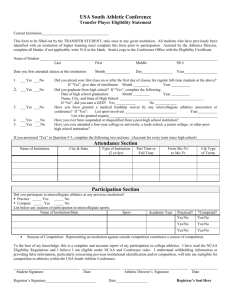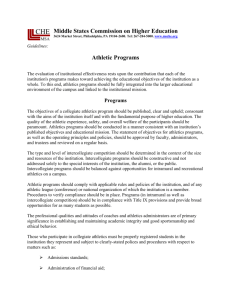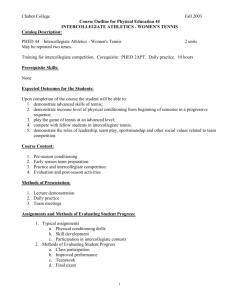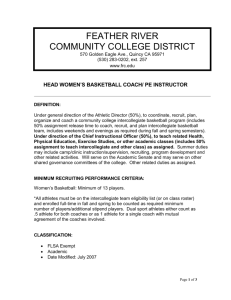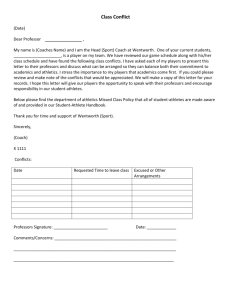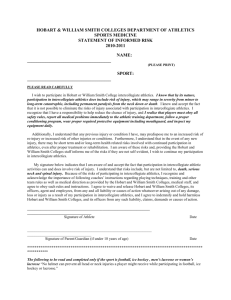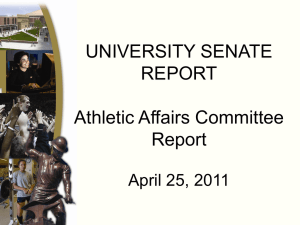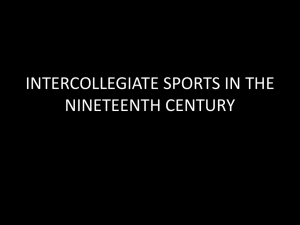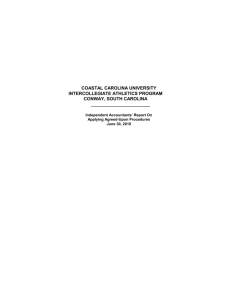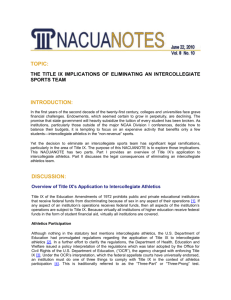Unit Name: Office of Athletics Unit Mission: The mission of the Office
advertisement
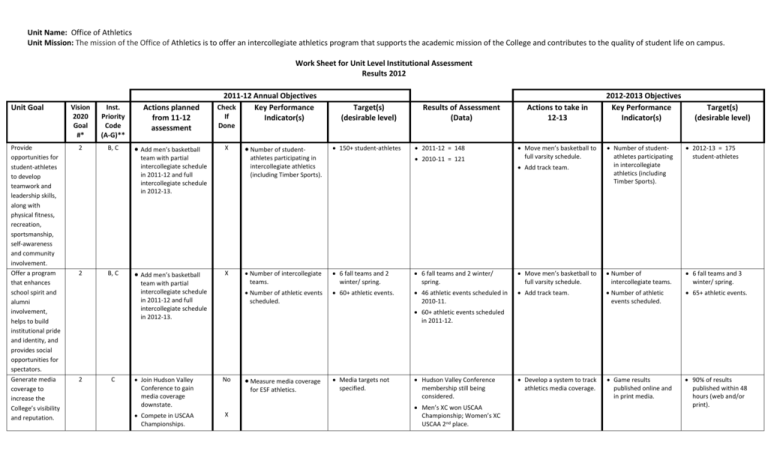
Unit Name: Office of Athletics Unit Mission: The mission of the Office of Athletics is to offer an intercollegiate athletics program that supports the academic mission of the College and contributes to the quality of student life on campus. Work Sheet for Unit Level Institutional Assessment Results 2012 Unit Goal Provide opportunities for student-athletes to develop teamwork and leadership skills, along with physical fitness, recreation, sportsmanship, self-awareness and community involvement. Offer a program that enhances school spirit and alumni involvement, helps to build institutional pride and identity, and provides social opportunities for spectators. Generate media coverage to increase the College’s visibility and reputation. Vision 2020 Goal #* Inst. Priority Code (A-G)** 2 B, C Actions planned from 11-12 assessment Add men’s basketball 2011-12 Annual Objectives Check Key Performance If Indicator(s) Done X team with partial intercollegiate schedule in 2011-12 and full intercollegiate schedule in 2012-13. 2 B, C Add men’s basketball C 150+ student-athletes athletes participating in intercollegiate athletics (including Timber Sports). X team with partial intercollegiate schedule in 2011-12 and full intercollegiate schedule in 2012-13. 2 Number of student- Target(s) (desirable level) Results of Assessment (Data) 2011-12 = 148 Actions to take in 12-13 2010-11 = 121 Move men’s basketball to full varsity schedule. 2012-2013 Objectives Key Performance Indicator(s) Target(s) (desirable level) 2012-13 = 175 student-athletes Add track team. Number of studentathletes participating in intercollegiate athletics (including Timber Sports). Number of intercollegiate teams. 6 fall teams and 2 winter/ spring. 6 fall teams and 2 winter/ spring. Move men’s basketball to full varsity schedule. Number of intercollegiate teams. 6 fall teams and 3 winter/ spring. Number of athletic events scheduled. 60+ athletic events. 46 athletic events scheduled in 2010-11. Add track team. Number of athletic events scheduled. 65+ athletic events. Develop a system to track athletics media coverage. Game results published online and in print media. 90% of results published within 48 hours (web and/or print). 60+ athletic events scheduled in 2011-12. Join Hudson Valley Conference to gain media coverage downstate. No Compete in USCAA Championships. X Measure media coverage for ESF athletics. Media targets not specified. Hudson Valley Conference membership still being considered. Men’s XC won USCAA Championship; Women’s XC USCAA 2nd place. Contribute to the College’s efforts to attract and retain outstanding undergraduate students. 2 B Add men’s basketball team with partial intercollegiate schedule in 2011-12 and full intercollegiate schedule in 2012-13. X Number of studentathletes participating in intercollegiate athletics. Computed grade point average for continuing student-athletes submitted for USCAA Fall eligibility (does not include Timber Sports). 150+ student-athletes Fall 2011 number was 148. Target GPA is 3.0 or higher. Fall 2010 number was 121. Fall 2011 GPA was 3.00. Fall 2010 GPA was 3.13. Add men’s basketball team with full intercollegiate schedule in 2012-13. Number of studentathletes participating in intercollegiate athletics. Maintain current priority focus on academics for all coaches and students. Computed grade point average for continuing student-athletes submitted for USCAA Fall eligibility (does not include Timber Sports). 2012-13 = 175 student-athletes Target GPA is 3.0 or higher. * GOAL 1 Enrich academic excellence in both undergraduate and graduate education GOAL 2 Provide an outstanding student experience GOAL 3 Be the “go-to” institution with a strong and visible reputation GOAL 4 Become financially secure and independent GOAL 5 Strategically build and enhance partnerships and collaborative relationships GOAL 6 Respond to the needs of society GOAL 7 Invest in ESF’s human resources and physical infrastructure (http://www.esf.edu/vision2020/vision2020.pdf) ** A) Sustainability; B) Improve the Quality of Entering Students and Modest Enrollment Growth; C) Improve Visibility; D) Financial Stability; E) Community Engagement; F) Strengthen and Refine Assessment Practices; G) Invest in Human Resources and Physical Facilities; H) Evolve Academic Programs to provide society with meaningful research advances and graduates who contribute to society’s well-being; I) Information Technology Transformation; J) Institutional Diversity
